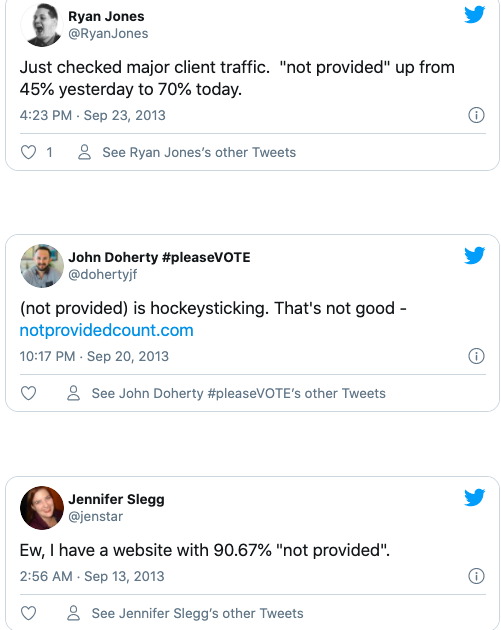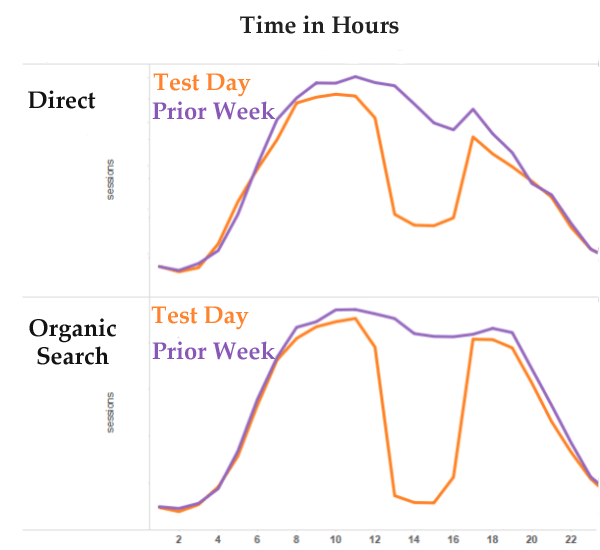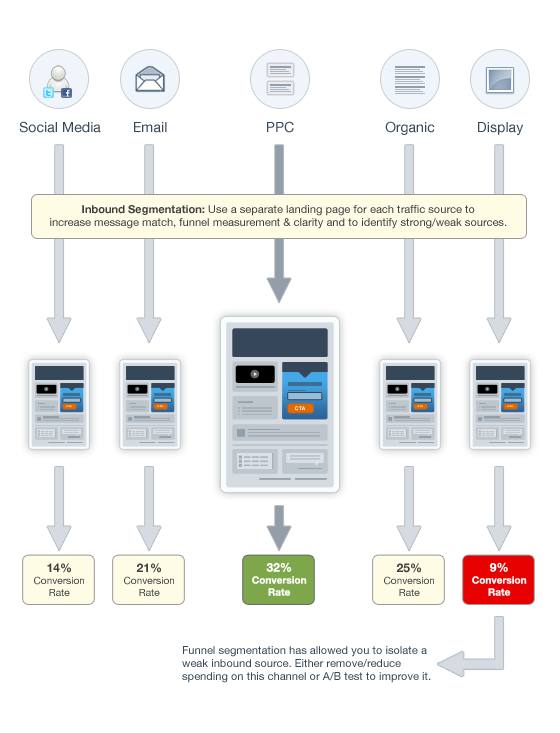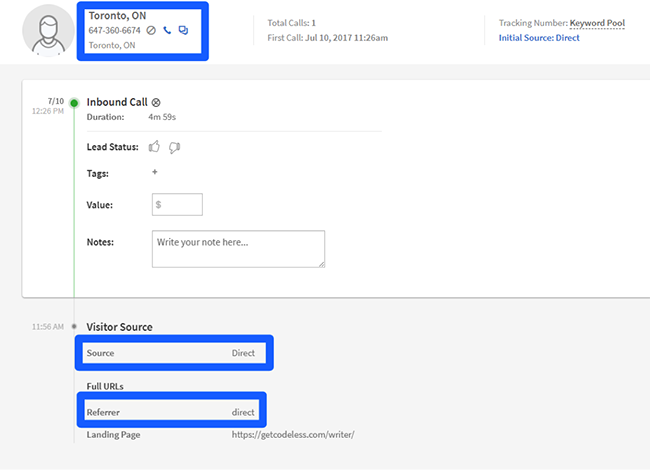Traditional marketers don’t rely enough on data.
Newbies fall in the same boat.
But the more advanced, technical ones?
They rely on it too much.
Here’s why.
TABLE OF CONTENTS
Why your data-driven marketing is lying to your face
‘Growth hacking’ sounds smart. Sounds sophisticated. Sounds edgy. But growth hacks don’t always make for great marketing decisions.
Cool new marketing technology using data points, and data analytics are very seductive to every modern marketing team. But they lack the actionable insight that actually moves the needle.
Sounds like a fundable idea in an Emerald City that’s home to the most advanced companies in the world, yet can’t figure out how to keep human feces off the street or build a skyscraper that doesn’t sink. (Ahh, paradise.)
Trouble is that your data is bullshit. Not some of the time. But most of the time.
Statistics lie. Data lies. They don’t have a lot to do with your actual customer. They ruin the creative aspect of most marketing messages. They ramp up the marketing spend and drive down the customer experience.
Which means all those ‘data-driven’ marketing campaigns are simply best guesses. Hunches. And gut feelings. All of the things most digital marketers supposedly despise.
‘However, when harnessed correctly, data-driven marketing can also provide valuable insights into customer patterns and preferences, allowing for more targeted and effective campaigns. It is about striking the right balance between relying on data and understanding the nuances of human behavior to deliver meaningful, personalized customer experiences” – says Milosz Krasinski, Managing Director at Chilli Fruit Web Consulting.
Lurking beneath the dozens of digital marketing dashboards gaudily flaunting KPI porn, there’s a plethora of problems infecting your underlying assumptions.
Marketers are spending more and more and more on data. Despite the fact that less and less and less is known. They blind today’s marketer and make them use a strategy that doesn’t work.
According to a CMO survey organized by Duke, Deloitte, and the American Marketing Association…
“[Analytics-based spending] increases are expected [over the next three years] despite the fact that top marketers report that the effect of analytics on company-wide performance remains modest, with an average performance score of 4.1 on a seven-point scale, where 1=not at all effective and 7=highly effective. More importantly, this performance impact has shown little increase over the last five years, when it was rated 3.8 on the same scale.”

And we ain’t just talkin’ TOFU or BOFU here.
But, like, the entire damn funnel.
Here, take a look for yourself.
❌ Years ago, Google stole all of your keyword referral data. Poof. Gone. 100% not provided.

❌ Leaving you to stammer and cajole clients and bosses. Or point to inane things like keyword rankings. Which, oh shucks, are also becoming irrelevant right before your vary eyes.
Ok, well, hmmmm.
How about traffic? Yes! We’ll look at traffic data! That’ll show ’em.
❌ Except, it doesn’t. Because “Direct” consumes everything in its sight, as much as 60% of all your hard-earned SEO skillz.

The problem?
SEO ain’t the only casualty in this bloodbath.
❌ So, too, are email marketing and social.

Pretty much all organic (read: not paid) sources are F-d up. For everyone. Everywhere.
Leaving you with…
¯\_(ツ)_/¯
Ok, so let’s just pay.
Yeah, we can pay.
At least that way, good ol’ Google will have our backs. In this case, the traffic data will be legit.
Except, oh shoot, the conversions aren’t.
Because you know that ringing phone in your office? The one that brings in the high-ticket leads?
❌ Yeah, those. They’re coming from digital channels. ‘Cept, you’re not tracking them properly. So you won’t get the credit for that, either.

❌ Ok, sure. Call extensions can track calls made directly from the ad.
But come the F on. Who does that?
Our tech-illiterate parents, perhaps? Not real people. With real money to spend. (OR, only people who’re already brand-aware. See #7 below.)
❌ How about those web-based forms, though?
Surely, the data analytics in marketing on those are legit. That’s the logical conclusion at first pass, anyway.
Except for one teeny, tiny issue.
Those are leads, not purchases. Who cares if one marketing campaign drives 5x leads, if none of them hand over some sticky icky green. 💰
And who cares if some buy, but buy small. Or buy once, instead of recurring. LTV of the customer is the aspiration.
So you’ll need some sort of closed-loop analysis. One that shows you everything from first click to last purchase.
❌ Too bad that also just so happens to go against Google Analytics’ Terms of Service. They will literally delete your account if they find you collecting personally identifiable information (PII).
And the less said about GDPR here, the better.
❌ Your attribution models are flawed.
❌ Your statistically significant tests aren’t anywhere close to statistically significant because your sample size is too statistically insignificant.
❌ Your conversion rates are wrong.
❌ And even your purchase data is wrong. OR, at least, flawed. Pointing you in the wrong direction to what’s actually working or what’s actually succeeding.
That’s what you’re up against. It ain’t pretty. But it’s reality.
Too often, marketers and influencers and gurus hit Publish on some amazing piece of wisdom. This is the common practice of most content marketing today. But when you boil everything down, stripping away the layers of faux authority, you realize that it’s either (a) incorrect, (b) misguided, or (c) utter horse shit. 🐎 💩
The silver lining is that there are a few tricks. You can do some of these things. It won’t solve all of these problems. But it will get you a little closer to accurate data you can actually use.
Scale insightful marketing content across the web.
We help you grow through expertise, strategy, and the best content on the web.
7 Data-Driven Marketing tips to reclaim your data
1. Segment or filter your dark traffic.
“Direct” traffic is supposed to actually be, you know, direct. Like, someone types in your homepage.
You can also apply this same logic to other big pages, like Pricing or Contact or About.
But anything else? All those long, hard-to-remember URL strings?
No chance those are direct visits.
So create a segment of visitors from “Direct,” to any landing page (entrance) that’s not a simple, obvious URL:

Seer provides much more on the topic, showing you how to isolate these cases in the Multi-Channel Funnels report.

2. Segment your inbound funnel.
Create unique pages for each unique traffic source.

This especially applies to paid campaign ad groups or individual keywords. But inbound ones, too.
Yes, this is time-consuming. Yes, it’s a pain in the ass. But yes, it’s worth it.
Then, keep track of each URL in a single campaign so you can do the next recommendation below.

3. Tag everything.
Every marketer worth their salt knows UTM tags.
The problem isn’t knowing it, but doing it.
Maybe it’s not your fault. Maybe there are too many things outside your control, like another department owning the site or publishing the email.
But excuses don’t get you paid more.
So help them. Give them the URL, complete with tracking code, to completely idiot-proof your campaign tracking.

4. Add call tracking.
Look for a software for call tracking. Whip out your corporate card. Sign up. Read this. Implement each step.
Thank me later when you get a raise because all of a sudden, “marketing is just generating so many more leads these days.” The same ones that were already coming in, but you weren’t previously getting the credit.

5. Integrate traffic and campaign data with a (good) CRM.
This is where begrudgingly spending a small fortune on something like HubSpot is worth it. Especially, if you have a high cost per lead that you’re trying to bring down.
Because you’ll finally be able to see how many actual paying customers Campaign A drives vs. B. And not just clicks. Or not just leads.
And you’ll get to see exactly how much money John Smith spends over the course of the year, further increasing the ROI on Campaign A.

With HubSpot’s comprehensive analytics and tracking capabilities, you’ll gain valuable insights from marketing data, allowing you to optimize your campaigns further, target the right audience, and ultimately boost your overall return on investment.
Frequently, during the collection of marketing data, companies fail to process it adequately, thereby jeopardizing the quality of the insights obtained. One effective solution to tackle this problem is to generate synthetic data, which serves the purpose of anonymizing, exploring, and simulating the original data.
6. Benchmark against yourself.
What’s the industry average CPC? Who cares.
If your data is wrong (or inaccurate), measuring against some random third-party data point is useless. It’s also misleading, because your business model might be different. You might be able to willingly spend more to acquire each lead because your LTV is through the roof.
So compare against yourself. Prior period, and prior year.

7. Do things that don’t scale. That you can’t track.
Branding seems vague. Seems intangible and fluffy.
Except it’s also the one thing standing in between you and more sales.
Brands get you more clicks and more purchases.
Quick. Which one of these would you choose?

No question. You recognize one. The other, not so much.
The problem with branding, however, is that it doesn’t convert. Will never convert. The stuff you do for branding to generate eyeballs will always look like a total failure on paper.
Unfortunately, that’s just how it works.
You think Red Bull was looking for a Google Analytics report after spending $65 million on dropping a human from space?
Not a chance. They were too busy trying to figure out how many hundreds of millions of people were going to see that and remember it forever.
With a big, shiny, bright, Red Bull logo plastered all over it.
That’s why they’re Red Bull, selling tiny cans at a higher margin while everyone else just competes for a distant second place.
Conclusion
Data lies. All the time. Right to your face.
At any given moment, your traffic source data is wrong. Your conversions are wrong. And therefore, your understanding of digital marketing ROI is wrong, too.
Despite what most marketing executives may preach, data science can poison your marketing efforts. Consumers are people, not big data statistics.
How do you break the obsession with data driven marketing? The first step is acceptance. The second includes a few of these low-hanging-fruit tips that change your approach to the marketing strategy for your customer journey.
But the last is the most important. Don’t fool yourself. You need eyeballs and visibility and awareness to drive anything.
Marketing efforts are unpredictable. You won’t be able to track it all. You might not be able to justify the ROI in the short term. However, it’s the only shot you’ve got in the long run.
That’s ok, though. Because the underlying data you have trouble justifying is probably wrong, anyway.



